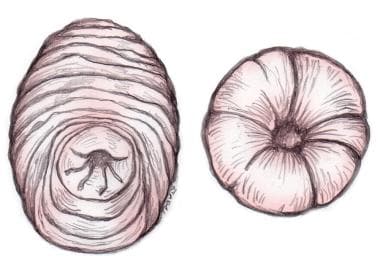Background
This article describes the manual reduction of rectal prolapse. Rectal prolapse is an uncommon condition that may be encountered by physicians in a number of settings and specialties. The incidence of this condition is bimodal. It occurs in children younger than 1 year but is most commonly encountered in older adults. In adults, a female predominance exists.
A population-based cohort study from England that used Hospital Episode Statistics to evaluate trends in the surgical treatment of rectal prolapse from 2001 to 2012 (N = 25,238; 29,379 operations) reported that the median patient age was 73 years, patients were predominantly female (female-to-male ratio, 7:1), the mean length of hospital stay was 3 days, and the number of patients increased over the study period.
Predisposing factors for rectal prolapse include the following:
Constipation with associated repeated straining at stool
Decreased sphincter tone or weakness of the pelvic floor (this may be age-related)
It is important to distinguish between full-thickness prolapse and mucosal prolapse (see the image below).
Diagram depicting clinical difference between true (full-thickness) prolapse (left), including all layers of rectum and with circular folds seen on prolapsed intestine, and procidentia, or mucosa-only prolapse (right), in which radial folds are seen in mucosa.
Rectal prolapse can sometimes be confused with intussusception.
When the intussusception prolapses through the anal verge, it can mimic procidentia.

